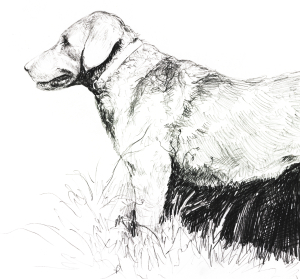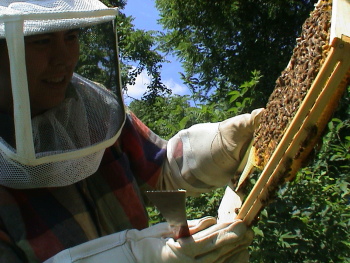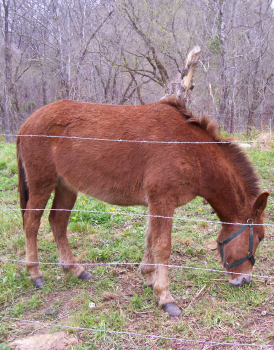
Use moderation with animals
 Eventually,
every homesteader will be faced with the thorny issue of
livestock. Chances are that your homesteading dreams included
lots of animals giving you fresh milk, eggs, and meat. The
reality,
though, is that animals can use up your time so quickly that you're
working for them instead of vice versa.
Eventually,
every homesteader will be faced with the thorny issue of
livestock. Chances are that your homesteading dreams included
lots of animals giving you fresh milk, eggs, and meat. The
reality,
though, is that animals can use up your time so quickly that you're
working for them instead of vice versa.
My first piece of advice for new homesteaders is to make a distinction
between pets and livestock. Use your own judgement on the pet
front --- we love our cats and dog and believe that the time we put
into them is totally worth it for our own mental stability. We don't even pretend that
our pets pull their weight on the farm with their limited
mouse-catching and deer-chasing abilities. But we also know that having
more than our current two cats and one dog would be too much for us to
handle.
 In
the world of livestock, as I mentioned earlier I do recommend that all
homesteaders start out with a worm bin. Most homesteaders will
also be able to handle a few chickens either their first or second
year, especially if they are careful to start small. If you are
big
honey eaters the way we are, I would recommend getting honeybees around year two
or three, once you're established and have a bit of time to devote to
their care.
In
the world of livestock, as I mentioned earlier I do recommend that all
homesteaders start out with a worm bin. Most homesteaders will
also be able to handle a few chickens either their first or second
year, especially if they are careful to start small. If you are
big
honey eaters the way we are, I would recommend getting honeybees around year two
or three, once you're established and have a bit of time to devote to
their care.
 What
about bigger animals? We divide larger livestock into three main
categories --- draft animals, dairy animals, and meat animals.
Due to
our own failed experience with mules, I recommend that unless you've
had experience with draft animals in the past and have at least an hour
a day to devote to them, you save draft animals for later (if
ever.) To me, dairy animals are in the same boat --- you need to
be willing to be tied down twice a day for the rest of your life.
(With just our pets, chickens, bees, and worms, we can go out of town
for a few days without needing to find a farm-sitter.)
What
about bigger animals? We divide larger livestock into three main
categories --- draft animals, dairy animals, and meat animals.
Due to
our own failed experience with mules, I recommend that unless you've
had experience with draft animals in the past and have at least an hour
a day to devote to them, you save draft animals for later (if
ever.) To me, dairy animals are in the same boat --- you need to
be willing to be tied down twice a day for the rest of your life.
(With just our pets, chickens, bees, and worms, we can go out of town
for a few days without needing to find a farm-sitter.)
If you want to branch out beyond worms, bees, and chickens, I
would start with meat animals. Even so, I wouldn't consider
embarking on the project unless I had a good pasture and a place to
store hay for the winter. Small meat animals like poultry and
rabbits might fit into year three or four of your ten year plan, but I
suspect that larger animals would be closer to year nine or ten.
Of course, as with all parts of your homesteading plan, you should
decide what's most important for you. If all you've ever dreamed
about is having a milk cow, then by all means move it up to year two
and put off the garden until year four. After all, the best part
of a homestead is the way it allows you to choose your own
adventure. Don't forget to have fun!
| This post is part of our Starting Out on the Homestead lunchtime
series.
Read all of the entries: |
Want more in-depth information? Browse through our books.
Or explore more posts by date or by subject.
About us: Anna Hess and Mark Hamilton spent over a decade living self-sufficiently in the mountains of Virginia before moving north to start over from scratch in the foothills of Ohio. They've experimented with permaculture, no-till gardening, trailersteading, home-based microbusinesses and much more, writing about their adventures in both blogs and books.
Want to be notified when new comments are posted on this page? Click on the RSS button after you add a comment to subscribe to the comment feed, or simply check the box beside "email replies to me" while writing your comment.
